High Impact Tutoring Built By Math Experts
Personalized standards-aligned one-on-one math tutoring for schools and districts
In order to access this I need to be confident with:
Reciprocal mathSquare numbers
Repeating decimals
Cube numbers
Types of numbers
Here you will learn about different types of numbers and how they are related and classified.
Students begin to learn about types of numbers beginning in kindergarten and develop that knowledge from elementary school through high school.
What are types of numbers?
Types of numbers are classified into specific number sets. In elementary school, you will work with the set of rational numbers.
Let’s look at the different types of numbers and how they are classified.
| Number Sets | Description | Samples |
|---|---|---|
Natural Numbers | Positive whole numbers also | 1, 2, 3, 4, 5, 6, ... |
Whole Numbers | Positive whole number plus 0. | 0, 1, 2, 3, 4, 5, 6 ... |
Integers | Positive and negative whole | …-3, -2, -2, 0, 1, 2, 3... |
Rational Numbers | Any number that can be expressed | -5, 0, 1, \cfrac{4}{5} \, , 1\cfrac{3}{4} \, , -1.\overline{2}, 9.5, 0.\overline{3} |
Irrational Numbers | A number that cannot be expressed | \sqrt{5}, -\sqrt{11}, \sqrt{2}, \pi |
Real Numbers | All of the rational numbers plus the | 1, \cfrac{4}{5} \, , \sqrt{12}, 0.\overline{53}, 0.\overline{12}, -7, 0, 34 |
Step-by-step guide: Natural numbers
Step-by-step guide: Whole numbers
Step-by-step guide: Integers
Step-by-step guide: Rational numbers
Step-by-step guide: Irrational numbers
A Venn diagram can also help you see the number sets.
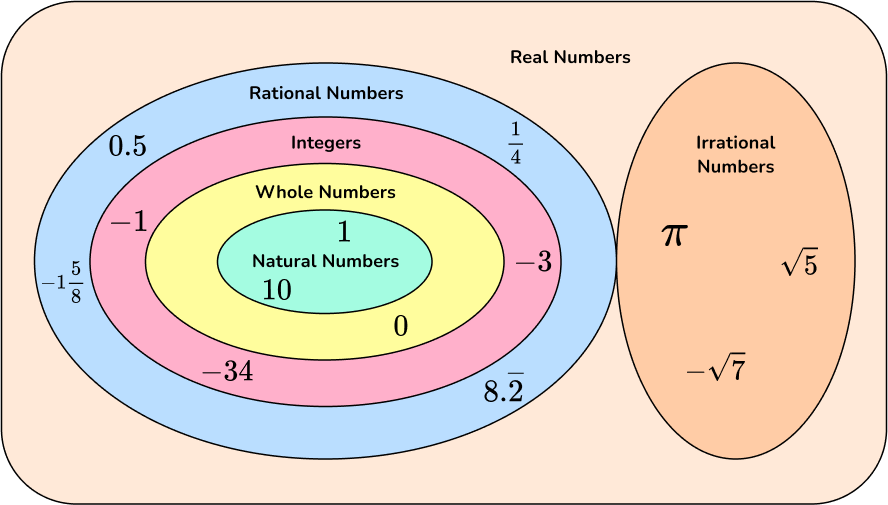
Step-by-step guide: Number sets
Special classifications
Prime and composite numbers
A prime number is a number with exactly two factors: itself and 1.
2 and 7 are examples of prime numbers.

2 has 2 factors: 7 has 2 factors: 1, 2 \hspace{2.5cm} 1, 7 1 \times 2 = 2 \hspace{2cm} 1 \times 7 = 7 | A composite number is a number with more than two factors.
4 and 12 are examples of composite numbers
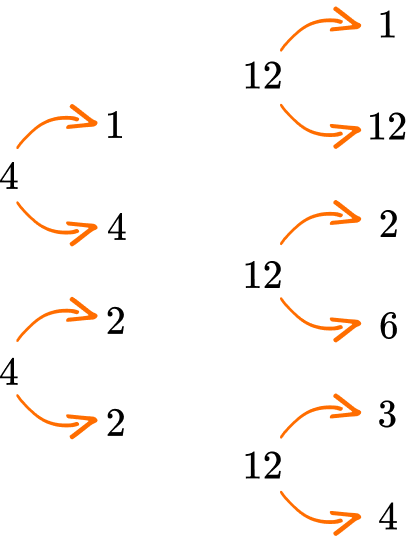
4 has 3 factors: 12 has 6 factors: \hspace{.4cm}1, 2, 4 \hspace{1.9cm} 1, 2, 3, 4, 6, 12 \hspace{.2cm}1 \times 4 = 4 \hspace{1.7cm} 1 \times 12 = 12 2 \times 2 = 4 \hspace{1.7cm} 2 \times 6 = 12 \hspace{3cm} 3 \times 4 = 12 |
Step-by-step guide: Prime and composite numbers
Even and Odd Numbers
Even numbers are divisible by 2 without remainders; they end in 0, 2, 4, 6, or 8.  | Odd numbers are not divisible by 2 without remainders and end in 1, 3, 5, 7, or 9.  |
Step-by-step guide: Even numbers
Step-by-step guide: Odd numbers
Positive and negative numbers
| Positive numbers are numbers that are greater than 0. On the number line, they are to the right of 0. Positive numbers can be whole numbers, fractions, or decimals. |
Negative numbers are numbers that are less than 0. On the number line, they are to the left of 0. Negative numbers can be whole numbers, fractions, or decimals.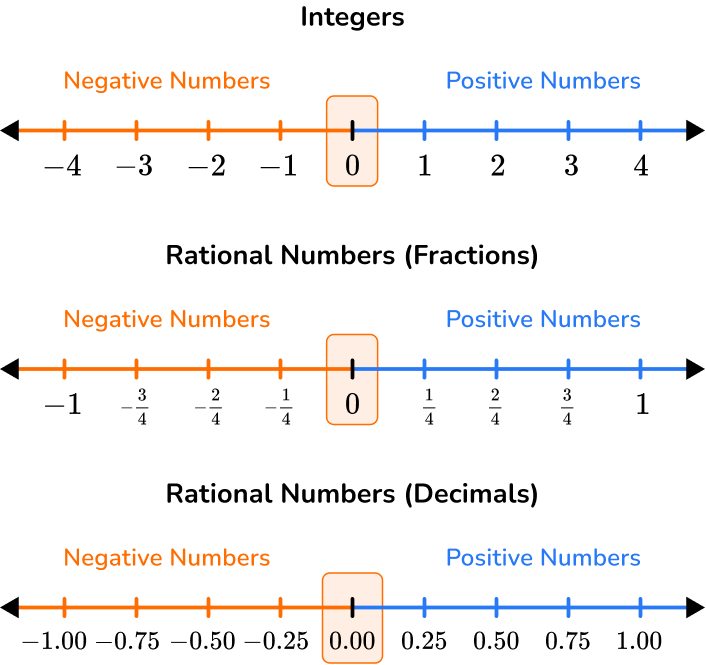 |
![[FREE] Types of Number Worksheet (Grade 2, 4 and 6)](https://thirdspacelearning.com/wp-content/uploads/2023/06/Types-of-number-check-for-understanding-listing-image.jpg)
[FREE] Types of Number Worksheet (Grade 2, 4 and 6)
![[FREE] Types of Number Worksheet (Grade 2, 4 and 6)](https://thirdspacelearning.com/wp-content/uploads/2023/06/Types-of-number-check-for-understanding-listing-image.jpg)
Use this quiz to check your grade 2, 4 and 6 students’ understanding of types of numbers. 10+ questions with answers covering 2nd, 4th, and 6th grade topics to identify learning gaps.
DOWNLOAD FREE![[FREE] Types of Number Worksheet (Grade 2, 4 and 6)](https://thirdspacelearning.com/wp-content/uploads/2023/06/Types-of-number-check-for-understanding-listing-image.jpg)
[FREE] Types of Number Worksheet (Grade 2, 4 and 6)
![[FREE] Types of Number Worksheet (Grade 2, 4 and 6)](https://thirdspacelearning.com/wp-content/uploads/2023/06/Types-of-number-check-for-understanding-listing-image.jpg)
Use this quiz to check your grade 2, 4 and 6 students’ understanding of types of numbers. 10+ questions with answers covering 2nd, 4th, and 6th grade topics to identify learning gaps.
DOWNLOAD FREEFractions
Fractions are numbers that are equal parts of a whole. They have a numerator and a denominator separated by a fraction bar. 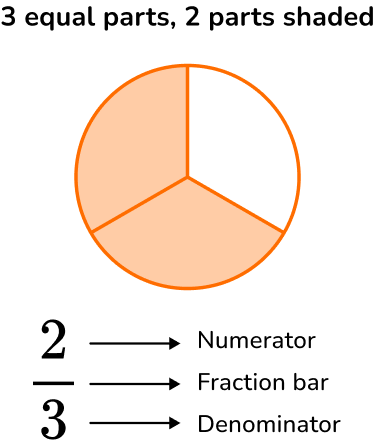 Fractions can also be interpreted as division. Numerator → dividend Denominator → divisor Fraction bar → division bar Types of fractions: For example, \, \cfrac{2}{3} \, is a proper fraction. For example, \, \cfrac{4}{3} \, is an improper fraction. For example, \, 1\cfrac{1}{3} \, is mixed number. |
Decimals
| Decimals are numbers that are similar to fractions. They have a whole part and a fractional part that are separated by a decimal point. Our decimal system splits whole numbers into tenths, hundredths, thousandths, and so on. For example, 1.21 is a number in decimal form. It can be represented on a place value chart. 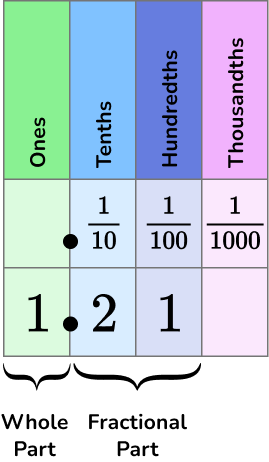 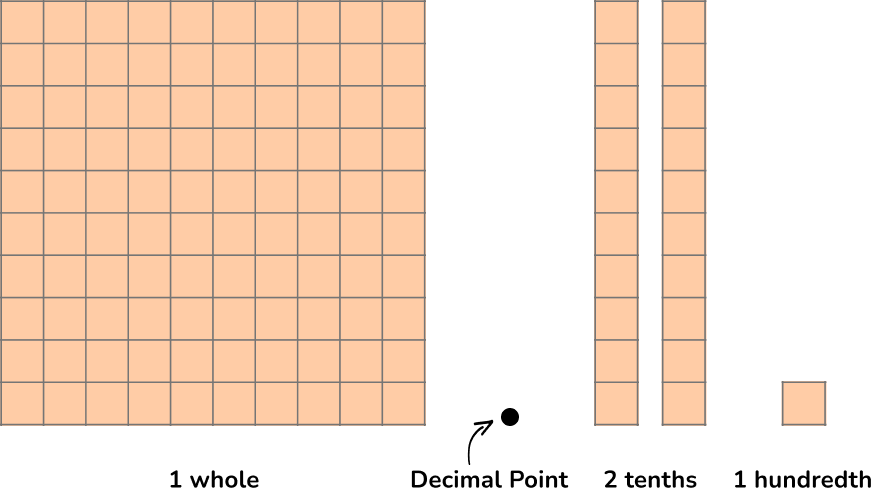 Types of Decimals 1.21 is the same as 1\cfrac{21}{100} = \cfrac{121}{100} 0.33333… or 0.\overline{3} is a repeating decimal. The bar above the digit 3 means that 3 is repeating. Repeating decimals can be represented as a fraction. 0.\overline{3} is the same as \cfrac{1}{3} cannot be represented as a fraction. \pi , (pi) is a non-repeating, non-terminating decimal. \sqrt{5} ( square root of 5 ) is a non-repeating, non-terminating decimal. |
Square and Cube Numbers
| A square number is the result of multiplying a number by itself. For example: 1 \times 1 = 1 → 1 is a square number 2 \times 2 = 4 → 4 is a square number 3 \times 3 = 9 → 9 is a square number 1 \times 1 can be written in a shorter way, using an exponent. 1^2 2 \times 2 can be written in a shorter way, using an exponent 2^2 3 \times 3 can be written is a shorter way, using an exponent 3^2 | A cube number is the result of multiplying an integer by itself three times. For example: 1 \times 1 \times 1 = 1 → 1 is a cube number 2 \times 2 \times 2 = 8 → 8 is a cube number 3 \times 3 \times 3 = 27 → 27 is a cube number 1 \times 1 \times 1 can be written in a shorter way, using an exponent. 1^3 2 \times 2 \times 2 can be written in a shorter way, using an exponent 2^3 3 \times 3 \times 3 can be written is a shorter way, using an exponent 3^3 |
Reciprocals
| The reciprocal of a number is the multiplicative inverse of a number.
Meaning that when the reciprocal of a number (multiplicative inverse) is multiplied to the given number, the result is 1. For example, the reciprocal of 5 is \, \cfrac{1}{5}. 5 can be written as \, \cfrac{5}{1} \, to find the reciprocal, flip the numerator and the denominator. So, \, \cfrac{5}{1} \, will become \, \cfrac{1}{5}. 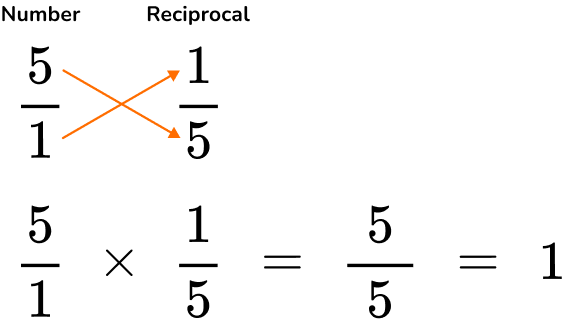 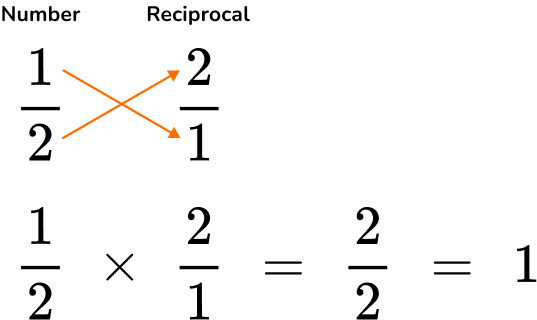 |
What are types of numbers?
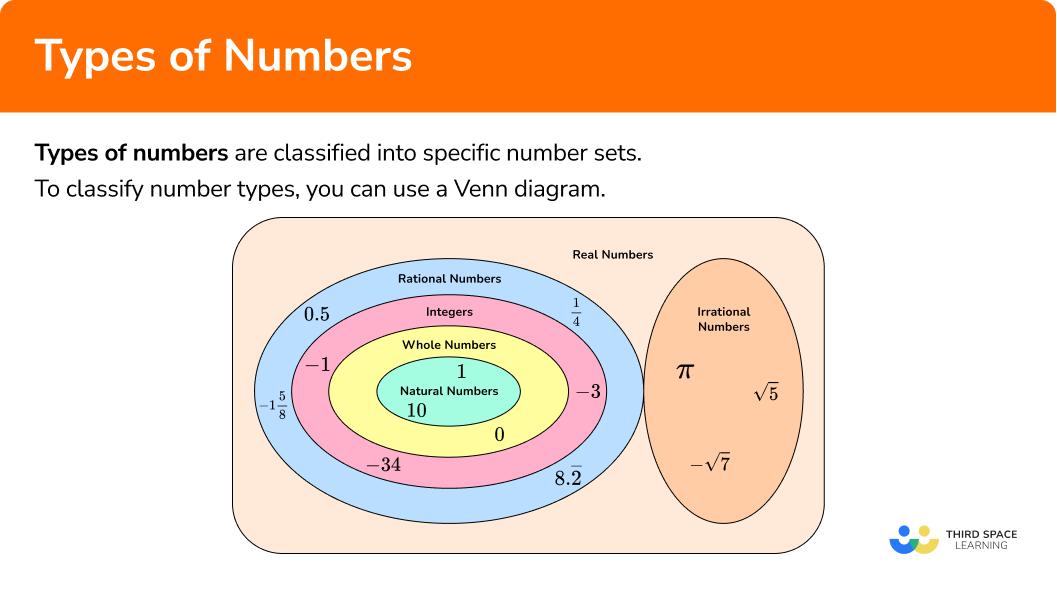
Common Core State Standards
How does this relate to Kindergarten through 6th grade?
- Kindergarten – Counting and Cardinality (K.CC.B.4.c)
Understand that each successive number name refers to a quantity that is one larger
- Grade 1 – Number and Operations Base Ten (1.NBT.A.1)
Count to 120, starting at any number less than 120. In this range, read and write numerals and represent a number of objects with a written numeral.
- Grade 2 – Number and Operations Base Ten (2.NBT.A.1)
Understand that the three digits of a three-digit number represent amounts of hundreds, tens, and ones; e.g., 706 equals 7 hundreds, 0 tens, and 6 ones.
- Grade 3 – Number and Operation – Fractions (3.NF.A.1)
Understand a fraction \cfrac{1}{b} as the quantity formed by 1 part when a whole is partitioned into b equal parts; understand a fraction \cfrac{a}{b} as the quantity formed by a parts of size \cfrac{1}{b}.
- Grade 4 – Number and Operations Base Ten (4.NBT.A.2)
Read and write multi-digit whole numbers using base-ten numerals, number names, and expanded form. Compare two multi-digit numbers based on meanings of the digits in each place, using >, =, and < symbols to record the results of comparisons.
- Grade 5 – Number and Operations Base Ten (5.NBT.A.3)
Read, write, and compare decimals to thousandths.
- Grade 6 – Number System (6.NS.C)
Apply and extend previous understandings of numbers to the system of rational numbers.
- Grade 6 – Expressions and Equations (6.EE.A.1)
Write and evaluate numerical expressions involving whole-number exponents.
How to determine the type of a number
In order to classify a number:
- Recall the definition of the type of number needed.
- Show that the number fits or does not fit in the number set or definition.
In order to find the reciprocal of a number:
- Identify the numerator and denominator of the given number.
- Flip the numerator and the denominator.
- Multiply the given number to the reciprocal to check that the product is 1.
Types of number examples
Example 1: rational numbers
Is 1\cfrac{3}{4} \, a rational number?
- Recall the definition of the type of number needed.
By definition, a rational number is any number that can be expressed as a fraction where the numerator and denominator are integers.
2Show that the number fits or does not fit in the number set or definition.
1\cfrac{3}{4} \, is a mixed number. A mixed number can be written as an improper fraction.
The model shows 1\cfrac{3}{4}.
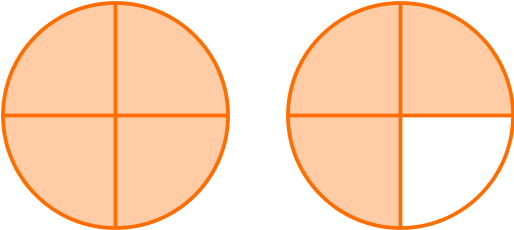
The first circle model shows 4 shaded parts out of 4 equal parts, which is \, \cfrac{4}{4} \, or 1.
The second model shows 3 shaded parts out of 4 equal parts which \, \cfrac{3}{4}.
\cfrac{4}{4}+\cfrac{3}{4}=\cfrac{7}{4}
\cfrac{7}{4} \, is a rational number because the numerator and the denominator are both whole numbers
\cfrac{7}{4} \, is the same as 1\cfrac{3}{4} \, → is in the rational number set
Also, rational numbers include all positive and negative mixed numbers.
Example 2: prime numbers
Determine whether the number 23 is a prime number.
Recall the definition of the type of number needed.
The definition of a prime number is any positive whole number that has only two factors, 1 and itself.
Show that the number fits or does not fit in the number set or definition.
The factors of 23 are 1 and 23. 23 is a prime number.
Step-by-step guide: Prime numbers
Example 3: odd numbers
Is 15 an odd number?
Recall the definition of the type of number needed.
Odd numbers are not divisible by 2 without remainders and end in 1, 3, 5, 7, or 9.
Show that the number fits or does not fit in the number set or definition.
15 ends in a 5, it is an odd number.
Example 4: reciprocals
Find the reciprocal of 14.
Identify the numerator and denominator of the given number.
14 can be written a the fraction \, \cfrac{14}{1} \, because all whole numbers can be written in this form.
The numerator is 14 and the denominator is 1.
Flip the numerator and the denominator.
\cfrac{14}{1} \, will become \, \cfrac{1}{14}.
The numerator becomes the denominator and the denominator becomes the numerator.
Multiply the given number by the reciprocal to check that the product is 1 .
\cfrac{14}{1}\times \cfrac{1}{14} = \cfrac{14}{14}=1
The product of a number and its reciprocal is always 1.
Example 5: square numbers
Determine if 16 is a square number.
Recall the definition of the type of number needed.
A square number is the result of multiplying an integer by itself.
Let’s start with 1.
\begin{aligned}
&1 \times 1 = 1 \\
&2 \times 2 = 4 \\
&3 \times 3 = 9 \\
&4 \times 4 = 16
\end{aligned}
Show that the number fits or does not fit in the number set or definition.
16 = 4\times 4. 16 is a square number.
Example 6: repeating decimal
Show that \cfrac{2}{9} is a repeating decimal.
Recall the definition of the type of number needed.
The definition of a repeating decimal is any decimal where the decimal places repeat indefinitely.
Show that the number fits or does not fit in the number set or definition.
A fraction can be seen as division where the numerator is the dividend, the denominator is the divisor, and the fraction bar is the division bar.
\cfrac{2}{9} \, is the same as 2 \div 9. Long division is used to divide the numbers.
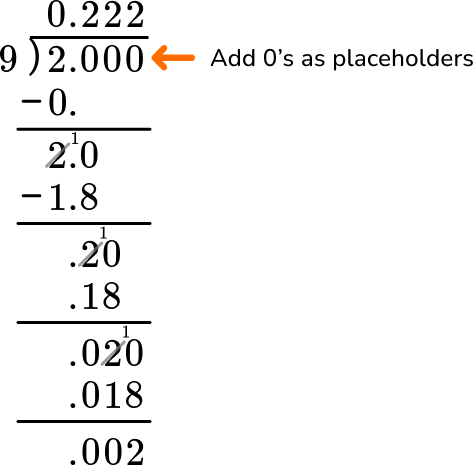
You can see the repeating pattern in the division and in the answer.
This means that \cfrac{2}{9}=0.22…=0.\overline{2}.
Teaching tips for types of numbers
- Use the Venn Diagram to help students make connections between the different types of number sets.
- The number sets build upon themselves from the very first set of numbers they work with which is natural numbers. This will help students understand that natural numbers, whole numbers and integers are all considered to be rational numbers too.
- Using a calculator is helpful when showing elementary students repeating decimals.
- Reinforce to students that the cardinal numbers and positive integers are the same as the set of natural numbers.
Easy mistakes to make
- Mixing up the definitions
It is common to mix up definitions. For example, assuming that whole numbers are natural numbers and vice versa
Example: Whole numbers include 0 and natural numbers do not.
- Thinking zero is a natural number
Zero is not a natural number. The natural numbers are considered to be the counting the numbers and starting with 1.
- Thinking whole numbers are not rational numbers
Rational numbers are numbers that can be expressed as a fraction where the numerator and the denominator are integers. The number 3 is rational because we can express 3 as the fraction \, \cfrac{3}{1}.
- Thinking that 2 is not a prime number
Students often think that prime numbers have to be odd numbers. 2 is a prime number and an even number.
Practice types of numbers questions
1. 22 is in what number set?
Natural numbers, whole numbers, integers, rational numbers

Only natural numbers

Only whole numbers

Only even numbers

Natural numbers are the positive whole numbers.
22 is a natural number.
Whole numbers are the natural numbers plus 0.
22 is a whole number.
Integers are positive and negative whole numbers.
22 is an integer.
Rational numbers are numbers that can be written as a fraction where the numerator and denominator are whole numbers.
22 can be written as \, \cfrac{22}{1} so, 22 is also a rational number.
2. What type of number is 1\cfrac{1}{5} ?
Composite Number

Whole number

Rational number

Even number

1\cfrac{1}{5} \, is a mixed number. A mixed number can be written as an improper fraction.
The model shows 1\cfrac{1}{5}
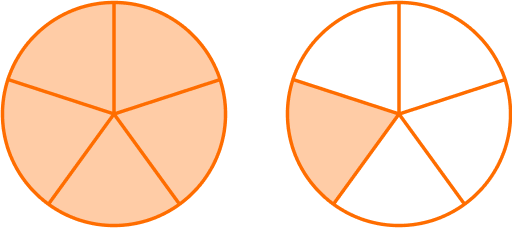
The first model shows 5 shaded parts out of 5 equal parts.
The second model shows 1 shaded part out of 5 equal parts.
\cfrac{5}{5}+ \cfrac{1}{5}= \cfrac{6}{5}
\cfrac{6}{5} \, is a rational number because the numerator and the denominator are both whole numbers.
\cfrac{6}{5} \, is the same as 1\cfrac{1}{5} \, is a rational number.
Also, rational numbers include all positive and negative mixed numbers.
By definition, a rational number is any number that can be expressed as a fraction where the numerator and denominator are integers.
The rational number set includes all positive and negative fractions, decimals, repeating decimals, and integers.
3. What type of number is 2 ?
Improper fraction

Prime number

Composite number

Odd number

2 is a prime number because it only has two factors 1 and 2.
1 \times 2 = 2
4. Find the reciprocal of \, \cfrac{2}{3}.




\cfrac{2}{3} \, has a numerator of 2 and the denominator of 3.
To find the reciprocal flip the numerator and the denominator where the numerator becomes the denominator and the denominator becomes the numerator.
So, the reciprocal of \, \cfrac{2}{3} \, is \, \cfrac{3}{2}
\cfrac{2}{3}\times \cfrac{3}{2}= \cfrac{6}{6}=1
5. What type of number is \, 0.\overline{4}?
Terminating decimal

Non-terminating decimal

Composite number

Repeating decimal

0.\overline{4} means 0.\4444444…
The bar above the number 4 in this decimal means repeating.
So, 0.\overline{4} is a repeating decimal.
6. What type of number is 25?
Prime number

Square number

Even Number

Proper fraction

A square number is a number multiplied to itself.
5 \times 5 = 25, so 25 is a square number.
Types of numbers FAQs
0 is not a natural number. 0 is a whole number. The natural numbers are considered the counting numbers, which begin with 1.
Yes, 2 is the only even prime number. 2 has exactly two factors, itself and 1.
Not all decimals are rational numbers. Only the decimals that can be written as a fraction are considered rational numbers.
Yes, in middle school you will learn how to take the square root and the cube root of numbers.
Yes, in algebra 1 and algebra 2, you will learn about complex numbers, which are real numbers and imaginary numbers. Complex numbers are made up of a real part and an imaginary part.
The next lessons are
Still stuck?
At Third Space Learning, we specialize in helping teachers and school leaders to provide personalized math support for more of their students through high-quality, online one-on-one math tutoring delivered by subject experts.
Each week, our tutors support thousands of students who are at risk of not meeting their grade-level expectations, and help accelerate their progress and boost their confidence.

Find out how we can help your students achieve success with our math tutoring programs.
[FREE] Common Core Practice Tests (3rd to 8th Grade)
Prepare for math tests in your state with these 3rd Grade to 8th Grade practice assessments for Common Core and state equivalents.
Get your 6 multiple choice practice tests with detailed answers to support test prep, created by US math teachers for US math teachers!